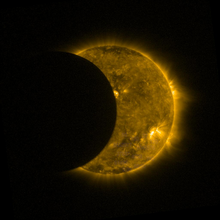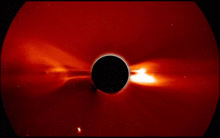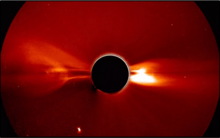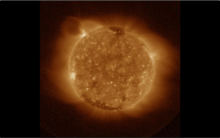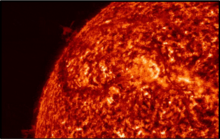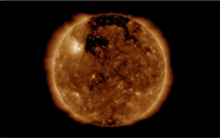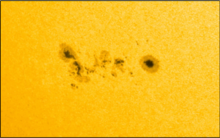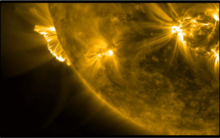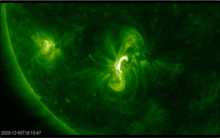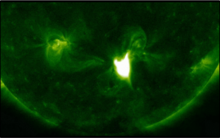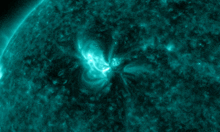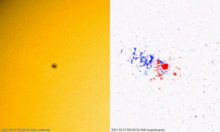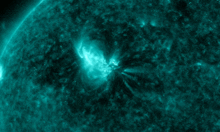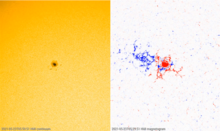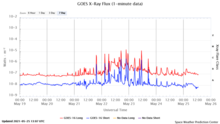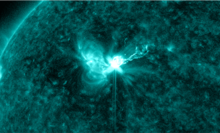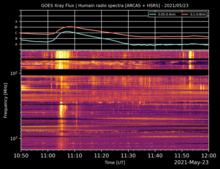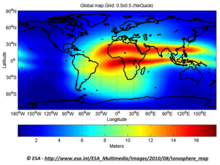news
Submitted on 2021-06-22
The hidden message in PROBA2/SWAP solar eclipse image revealed.
Submitted on 2021-06-21
A minor geomagnetic storm was recorded late on 15 June. Ongoing solar cycle 25 is -so far- somewhat more effective in producing geomagnetic storms than its predecessor.
Submitted on 2021-06-16
On 9 June, a small flare from a region behind the northwest solar limb was accompanied by a spectacular eruption.
Submitted on 2021-06-14
A compilation of the most memorable space weather moments of 2020, featuring data, links and movies.
Submitted on 2021-06-09
The solar eclipse of 10 June can be followed live online with the USET solar telescopes. As seen from Belgium, it will be a partial eclipse.
Submitted on 2021-06-04
Registration to vote on the future organization of the European Space Weather Community is now open!
Submitted on 2021-06-01
Our telescope SWAP onboard PROBA2 will broadcast the solar eclipse of 10 June together with hidden messages. Do your own Poirot image processing to discover more about SWAP's personality and win a VIP treatment on the PROBA2 premises.
Submitted on 2021-05-31
The first proton event of solar cycle 25 (SC25) took place on 29 May. It is the first such event since 10-11 September 2017.
Submitted on 2021-05-25
On 22 May, no less than 10 C-class and 2 M-class flares were registered, followed by another 4 C- and 1 M-class events during the subsequent day. The source of all this flaring activity was modest sunspot region NOAA 2824 in the northern solar hemisphere.
Submitted on 2021-05-25
The Journal of Space Weather and Space Climate (JSWSC) has opened a new Topical Issue on "Towards better understanding of the ionospheric plasma irregularities and scintillations"to appear in 2021/2022.
Pages
Zircon - This is a contributing Drupal Theme
Design by
WeebPal.

